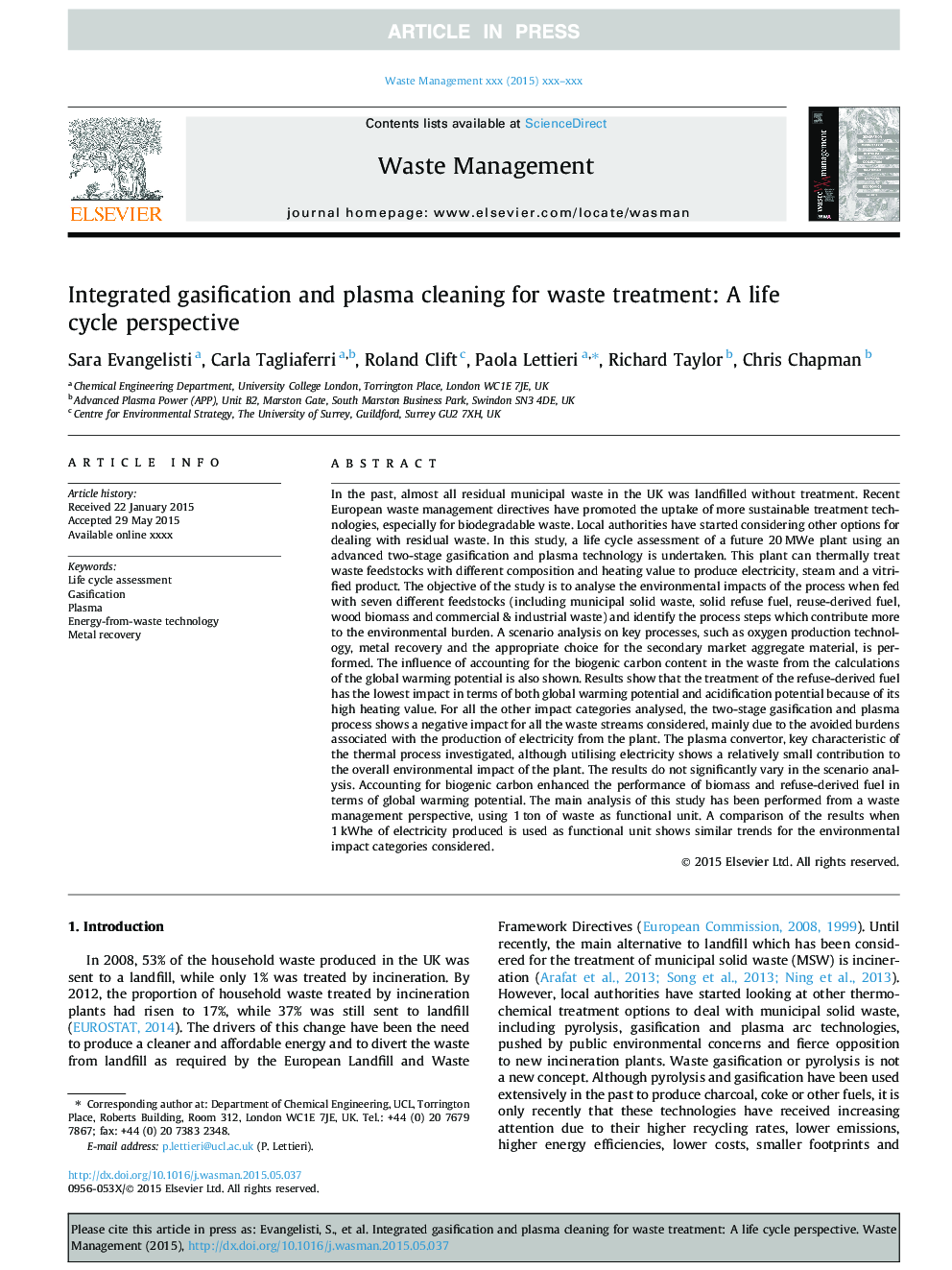| کد مقاله | کد نشریه | سال انتشار | مقاله انگلیسی | نسخه تمام متن |
|---|---|---|---|---|
| 6353998 | 1622642 | 2015 | 12 صفحه PDF | دانلود رایگان |
عنوان انگلیسی مقاله ISI
Integrated gasification and plasma cleaning for waste treatment: A life cycle perspective
ترجمه فارسی عنوان
گازی سازی یکپارچه و تمیز کردن پلاسما برای درمان زباله: چشم انداز چرخه عمر
دانلود مقاله + سفارش ترجمه
دانلود مقاله ISI انگلیسی
رایگان برای ایرانیان
کلمات کلیدی
ارزیابی چرخه حیات، گازسیون، پلاسما، تکنولوژی انرژی از زباله، بازیافت فلز
موضوعات مرتبط
مهندسی و علوم پایه
علوم زمین و سیارات
مهندسی ژئوتکنیک و زمین شناسی مهندسی
چکیده انگلیسی
In the past, almost all residual municipal waste in the UK was landfilled without treatment. Recent European waste management directives have promoted the uptake of more sustainable treatment technologies, especially for biodegradable waste. Local authorities have started considering other options for dealing with residual waste. In this study, a life cycle assessment of a future 20Â MWe plant using an advanced two-stage gasification and plasma technology is undertaken. This plant can thermally treat waste feedstocks with different composition and heating value to produce electricity, steam and a vitrified product. The objective of the study is to analyse the environmental impacts of the process when fed with seven different feedstocks (including municipal solid waste, solid refuse fuel, reuse-derived fuel, wood biomass and commercial & industrial waste) and identify the process steps which contribute more to the environmental burden. A scenario analysis on key processes, such as oxygen production technology, metal recovery and the appropriate choice for the secondary market aggregate material, is performed. The influence of accounting for the biogenic carbon content in the waste from the calculations of the global warming potential is also shown. Results show that the treatment of the refuse-derived fuel has the lowest impact in terms of both global warming potential and acidification potential because of its high heating value. For all the other impact categories analysed, the two-stage gasification and plasma process shows a negative impact for all the waste streams considered, mainly due to the avoided burdens associated with the production of electricity from the plant. The plasma convertor, key characteristic of the thermal process investigated, although utilising electricity shows a relatively small contribution to the overall environmental impact of the plant. The results do not significantly vary in the scenario analysis. Accounting for biogenic carbon enhanced the performance of biomass and refuse-derived fuel in terms of global warming potential. The main analysis of this study has been performed from a waste management perspective, using 1Â ton of waste as functional unit. A comparison of the results when 1Â kWhe of electricity produced is used as functional unit shows similar trends for the environmental impact categories considered.
ناشر
Database: Elsevier - ScienceDirect (ساینس دایرکت)
Journal: Waste Management - Volume 43, September 2015, Pages 485-496
Journal: Waste Management - Volume 43, September 2015, Pages 485-496
نویسندگان
Sara Evangelisti, Carla Tagliaferri, Roland Clift, Paola Lettieri, Richard Taylor, Chris Chapman,
